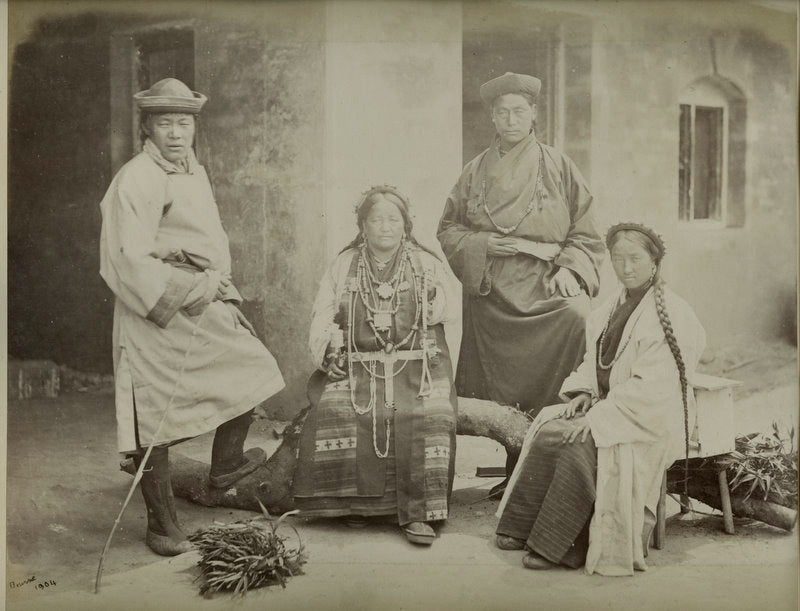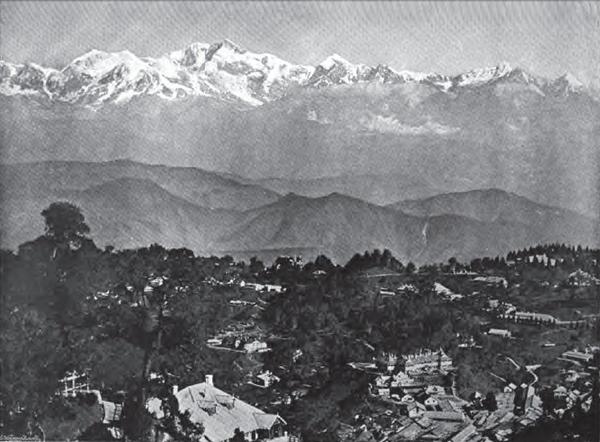
History of Darjeeling
Darjeeling, the land from where the eponymous tea, famously described as the champagne of teas comes, is situated in the foothills of the Indian Himalayas. Ranging from 100-4200 meters this mountainous region borders Nepal, Bhutan and Tibet.

Most of the tea bushes in Darjeeling owe their origin to tea seeds from China “smuggled” out by famous Scot adventurer and botanist Robert Fortune nearly 200 years ago. They followed a torturous winding path – like the roads here – of skewed global trade and politics of the colonial era.
By 1850 annual consumption of tea in Britain was already at around two pounds per person. Even as the Victorian England demanded its brew, the English traders were wary of having to depend upon China as a sole supplier. They had gone beyond looking for alternative supply sources; they wanted their very own source. This is what changed the course of Darjeeling forever – from being just a hamlet of few houses in remote fastness of Himalayas, to a hill resort and finally to a producer of world famous tea.
Due to its cool weather and topography Darjeeling seemed the ideal place to experiment with tea cultivation. The effort locally was spearheaded by Dr. Campbell, Superintendent of the District who also happened to be an avid horticulturist. In 1841 he planted tea bushes that had been cultivated from seeds brought by Fortune from China. The results were so good that just six years later the first tea nursery, the plants from which were used to set up the first tea garden.
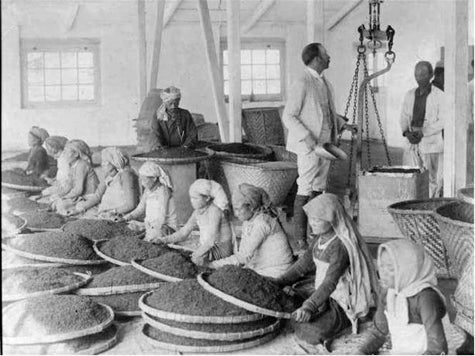 By 1866 Darjeeling already had 39 tea plantations of 1000 acres producing 133,000 lbs of tea. The growth was rapid. In the next ten years the number of gardens tripled, the acreage increased by 80 per cent, while production increased tenfold.
By 1866 Darjeeling already had 39 tea plantations of 1000 acres producing 133,000 lbs of tea. The growth was rapid. In the next ten years the number of gardens tripled, the acreage increased by 80 per cent, while production increased tenfold.
The quality of Darjeeling tea was quickly established. It had mainly to do with the geography: the gardens were situated at elevations ranging from around 150 m – 2100m, with annual rainfall of 70 to 150 inches. (England which is considered wet, gets a rainfall of around 25 inches a year). The mean annual temperature ranged from 75 F to 53 F, when winter temperature in the higher elevation dropped into the 40s.

The cool, damp climate, constant mist and the high elevation of Darjeeling (which has an impact on the sunlight) combined to produce a flavor profile typical of Darjeeling. The only tea that comes close to Darjeeling are some Taiwanese oolongs.
Before the British reached this remote and secluded part of the country, Darjeeling was inhabited by animist tribes of Tibeto-Burmese stock who practiced slash and burn cultivation. The hills were draped with dense tropical and sub-tropical forests.

The main political forces in the area were the kingdoms of Nepal, Sikkim and Bhutan. Darjeeling as a “frontier land” was controlled at different points by each of these kingdoms. The British first entered this territory in the 1820s, nearly 70 years after they had first begun setting up their colony in India. Not surprisingly (since colonial powers loved to fish in troubled waters) they came to “arbiter” the border dispute between Nepal and Sikkim. The dispute centered over Darjeeling.
The arbitration ended in an expected manner - the British took possession of Darjeeling in 1835. They turned the place into a premier hill station where their officials along with their families could retire during summer months to escape the brutal heat of the plains.

The strategic location of Darjeeling also was not lost on the British. The famous expedition of Andrew Younghusband into Tibet in 1903-04 took off from Darjeeling. Also because Nepal was closed to foreigners until 1950, all Everest expeditions prior to that started from Darjeeling.
After the British left India in 1947, the ownership of the tea gardens was transferred to Indian entrepreneurs. In the 1960s, West Bengal experienced a political upheaval that eventually brought the province under communist parties that ruled for nearly 35 years uninterruptedly.
During the early years of the communist rule, trade unions and garden management often clashed which caused serious problems in many of the tea gardens, many of them shutting down. Both sides were to blame: the owners did not shirk from cutting down on mandated workers’ benefits while the trade unions openly resorted to violence.
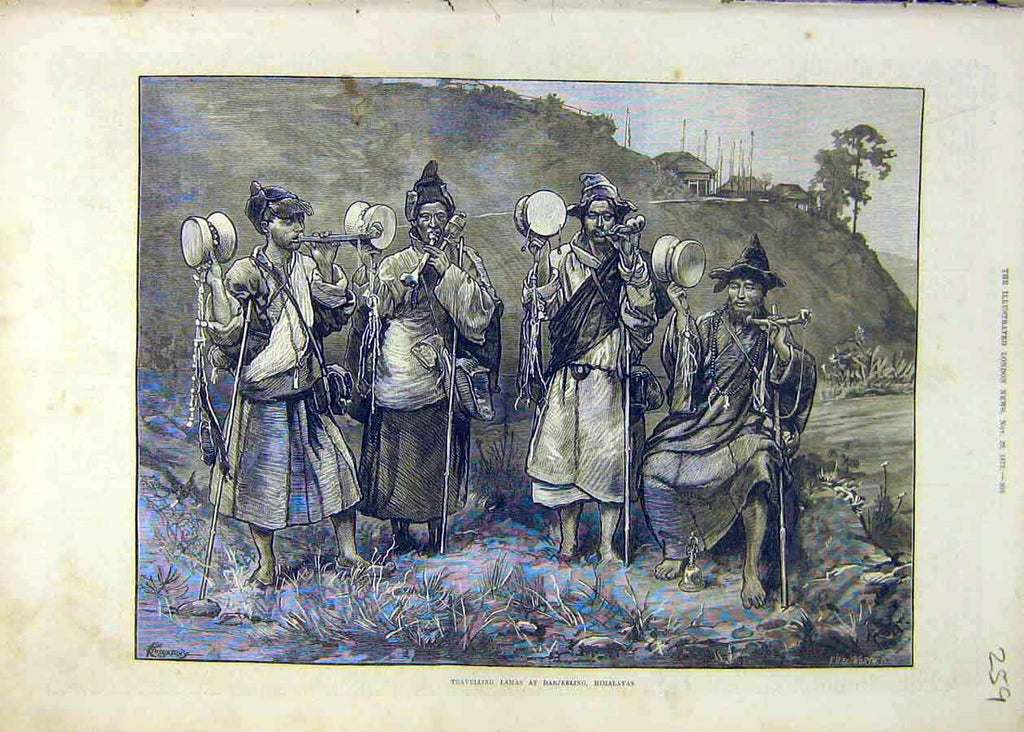
In the mid-80s Darjeeling experienced another kind of political trouble that paralyzed the industry. Century-old demand for political separation from West Bengal reared its head again in Darjeeling, and for the first the hills were engulfed in an armed political movement. The troubles ebbed after five years, and just as things were beginning to look good for the tea industry the break-up of USSR, one of its biggest buyers, caused a major set back.
Another challenge Darjeeling had to contend in recent times was the glut of “counterfeit” Darjeeling in the global tea market. Although only around 10 million kgs of Darjeeling used to be produced annually – making it a rather exclusive item – around 40 million tea used to be sold as Darjeeling in the world market. Most of it was tea blended with another cheaper tea but sold as Darjeeling, taking advantage of its premium brand image. It was not the manufacturer but packers and blenders, some of them big names in the global tea industry, who were engaged in the practice.
Those companies contended that Darjeeling was a “type” of tea. Hence they could sell Darjeeling tea that was made in Ceylon, and they did! After a prolonged and sustained effort by the Tea Board of India, Darjeeling in 2005 finally won protection under WTO as a Geographical Indicator. It means only tea that is grown in Darjeeling can be called Darjeeling.
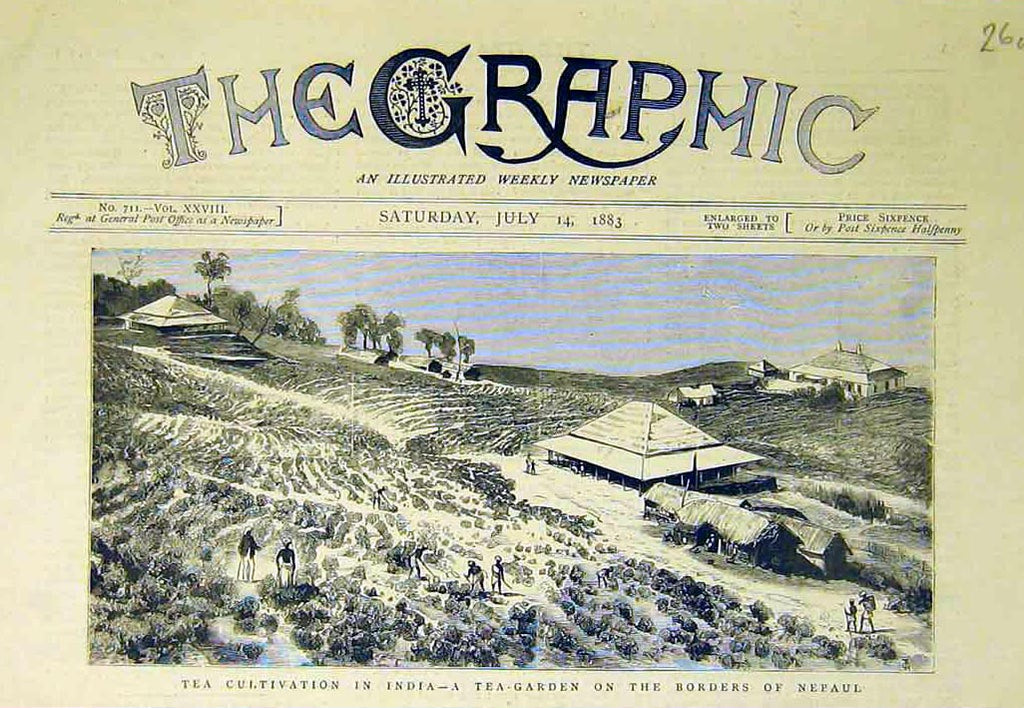
Presently Darjeeling has 87 gardens, spread over 17,500 hectares. It employs over 52,000 people of which 60 per cent are women. The region’s economy is heavily dependent on tea.
The Plantations Labor Act 1951 protects the rights of tea garden workers. From almost its inception, there has been much debate over the actual condition of the workers, and there are moves afoot to amend the Act. While the owners find the cost of the workers’ legal perquisites a burden, the workers allege exploitation and demand more guarantees.



